
'How many times do I need to say 'larb' before you talk to me? You know I larb you." The larby lines that May Parker delivers in the new Spiderman: Homecoming movie will startle Thai members of the audience. Finally, we will believe that Thai culture has made its way to Hollywood.
Correction: it is not Thai culture, but Thai food in particular, that has made its way to La La Land -- and to America in general. Of the 20,000 Thai restaurants overseas, 50% of them are in the US and Canada. Thai food is now more popular than pizza in Seattle. Portland, home of Andy Ricker's Pok Pok empire, has about one Thai restaurant for every 13.5 Thai people, with even southern Thai and Nakhon Sawan food represented. In 2015, the Michelin Guide awarded one star to Somtum Der in New York.
Thai food has deeply ingrained itself into American culture in ways that bring both pride and discomfort to Thais travelling or living in the US. Gone are the days when people confused Thailand with Taiwan. The 21st century experience of saying "I'm from Thailand" is hearing the reply: "You're from Thailand? I love Thai food!"
Thai food is not simply a culinary phenomenon; it has become the face of Thainess abroad, the battleground for negotiating Thai identity in the contested space between Asian-American and "fresh off the boat", a lens through which the immigrant experience of the 300,000 Thais living in America is refracted and understood.
What drove the rise of Thai food in America?
According to Jet Tila, celebrity chef and Thailand's first culinary ambassador to the US, the popularity of Thai food comes down to the balance of flavours between preaw, waan, man and kem (sour, sweet, rich and savoury). "There is a meeting point where I think most people could say this dish or this cuisine is very craveable."

EARLY DAYS: A Thai restaurant in Los Angeles in the 1980s. photo: courtesy of mark padoongpatt
Mark Padoongpatt, an assistant professor in Asian and Asian American Studies and recent author of the book Flavours of Empire: Food and the Making of Thai America, traces the popularity of Thai food back to the history of the American encounter with Thailand.
"Thai food culture in the United States doesn't begin when Thai immigrants get here but really begins when Thailand becomes really important for US foreign policy objectives, particularly anti-communism in Southeast Asia. That leads to a number of Americans going to Thailand … allowing them to discover Thai food about a decade or two before a large number of Thai people actually begin coming to the United States," he says.
He cites the first Thai cookbook in the US, Siamese Cookery by Marie M Wilson, published in 1965. At that time, the number of Thais legally residing in the US was not even large enough to warrant a separate category on the population census. The description on her book reads: "Exotic? Yes. But adapted for Western kitchens." Thai food debuted in the US in emasculated form, spread by white American suburbanites for a white American suburbanite palette.
Jet Tila brings out the links between Thai food and exoticness: "The history of this could be tied to the Vietnam War. Thai food started being popular in the late '60s, with Americans thinking 'They are an exotic country, they are our allies'."
The history of Thai food in the US began as a product of cultural colonisation. In the manner of Paul Gaugin or Henri Matisse travelling to Tahiti and using the lives of the locals to make art, Thai food was found by Americans in the 1960s seeking more exotic cultures from which they borrowed freely and out of context.
However, the story changed when Thai immigration to the US began in earnest. In the decade after the 1965 Amendment to the US Immigration and Nationality Act, immigration from Asia -- and Thailand -- tripled. "The '70s and '80s are when Thai food culture really takes off in Los Angeles," says Prof Padoongpatt.
The first way Thais began to reclaim Thai-American food was by solving the problem of Thai ingredients, which had relied on Chinese sources. "By the '70s, with the opening of the Bangkok market by Pramorte Tila -- Jet Tila's father -- we start to see the import of Thai goods to the US, and that's when you start to get more authentic Southeast Asian and Thai ingredients," says Prof Padoongpatt.
Yet, even as Thai food began to be made by Thais, it still had to be negotiated within the American frame of reference. Beyond the expected reduction of spice levels, there were other ways Thai food became Thai-American. Prof Padoongpatt speaks of the replacement of white rice with brown rice and the substitution of tofu into meat dishes during the Los Angeles health craze in the 1980s. Mahidol University lecturer Sirijit Sunanta writes of a restaurant serving tom kha soup as a first course, separate from rice in the main course, to adapt to the Western three-course meal. The association between Chinese food and Thai food -- as both ethnic cuisines with similar price points -- established popular dishes as convention in Thai-American restaurants: crab rangoon, spring rolls, scallion pancakes.

PIONEER: 'Siamese Cookery' was the first Thai cookbook in the USA. Cover from Tuttle Publishing. PHOTO: SUPPLIED
In Time Out USA's 2017 article on the best Thai food in America, the heading reads "from noodles to satay, dumplings, pad thai and more". Dumplings! Thai restaurants, whether they are Thai, Vietnamese or Chinese owned, serve gyoza and sushi along with some innovatively titled dishes: golden treasures, chicken paradise, golden triangle. Exotification is not simply a trap, but a tool now appropriated by immigrants to attract non-Thai-Americans into their restaurants, so when customers eat their spicy mango curry or tom yum fried rice, they are able to fulfil their fantasies of Eastern novelty while restaurant owners gain financial security from the steady flow of American customers.
Given this amalgamation of culture, the question of what Americans mean by Thai food is one that Thais are left to consider. When Americans see Thainess, do they see golden treasures, chicken paradises and crab rangoons?
The question of authenticity is one that weighs heavily for Thais, not just on an individual level but on a state level. The importance of Thai food to the country's global influence is exemplified by the sensitivity with which the Thai government polices the image of its food.
The Thai government made global headlines in 2014 by introducing a robot taste-tester to survey the authenticity of Thai food around the world. Developed by the National Innovation Agency, the Thai Delicious website writes that the machine "imitates the human tongue and nose to measure … sourness, sweetness, saltiness, spiciness or other significant parameters".
The programme has continued under the current government and is now branded "Authenticity of Thai Food to the World". In August 2016, Prime Minister Prayut Chan-o-cha introduced standardised recipes for the designated 13 "Truly Thai" dishes, including pad thai, krapao moo, tom yum gung (clear and broth soup) and chicken masaman curry.
The history of Thai governments' gastro-diplomacy is long but surprisingly uninterrupted. The one thing all governments, from populist parties to military juntas, can agree on is the value of authenticity in Thai food culture overseas.
Beginning with Plaek Phibunsongkhram's invention of pad thai to be exported as the national dish of Thailand, Thaksin Shinawatra took up the mandate in 2001 with the "Thai Kitchen of the World" campaign, which aimed to build a network of Thai restaurants and food markets overseas. This became the 2002 "Global Thai" programme, which exported chefs and restaurateurs with the aim of boosting the number of Thai-owned Thai restaurants overseas from 5,000 to 8,000. After a brief lapse during Thailand's political crises from 2006-10, the Yingluck Shinawatra government created the "Thai Select" programme in 2012 that granted seals of approval to Thai restaurants overseas serving authentic food.
Underlying these efforts is a brand of cultural chauvinism that has come to define Thai nationalism today. Most of the food supported by these programmes is from central Thailand, and the Ministry of Foreign Affairs works with the Ministry of Culture to forcefully promote the idea that there is a single way of being, and eating, Thai.
Supanee "Nui" Kitmahawong, owner of Michelin-starred Somtum Der, has worked closely with the Tourism Authority of Thailand >> >> in New York and agrees with the approach. "Of course it is a good policy," she says. "It is Thai food, and Westerners who are not born in Thailand and didn't grow up in Thailand can only make Thai food suitable for farangs. Authenticity is not just using the right ingredients -- it's the art of cooking. Even with the same ingredients, Thai people make the food very differently from foreigners, from the intricacies of beating the egg before frying it in a stir-fry, or being able to stir-fry in a way that is dry and not oily."
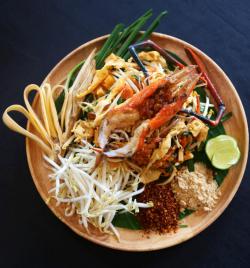
FIRM FAVOURITE: 'Pad thai' was once made Thailand's national dish by a PM. PHOTO: ARCHIVE
Jet Tila, however, disagrees. "I think we are shooting ourselves in the foot when we try labelling things as authentic. As an American eating Thai food in America, there is something authentic about that experience."
Prof Padoongpatt, another Thai-American, concurs: "Food is so localised. I would argue that it's difficult to standardise a flavour. Every restaurant here has its own thing, its own kind of flavour profile depending on the neighbourhood they want to serve."
He points to Thai restaurants in San Fernando Valley that now serve a growing Mexican clientele, to the point where Thai cooks and servers learn Spanish before they even learn English. Jet Tila's work with the Thai government as a Thai culinary ambassador involves proliferating Thai food to the Latin American community, which requires some understanding of how authenticity must be shifted in cross-cultural contact.
However, in big cities on both coasts, Americans are starting to catch on to a broader definition of authentic Thai food with the regional Thai food trend spearheaded by Somtum Der. Gen Prayut's 13 dishes and Yingluck's recommended dishes from central Thailand don't make the cut as Americans embrace food from Isan and Chiang Mai to Phuket.
"Eight years ago all restaurants were serving central Thai food until eventually the quality and reputation began to fall, like Chinese food," says Nui. "But then the regional food trend came in. That's when we brought Somtum Der onto the scene, featuring northeastern food. We didn't compromise on taste at all, we rarely reduced the spice in the food, and said to our customers: 'Thai people eat like this. If you can't eat like this, then sorry.'"
Andy Ricker, owner of Portland and New York's wildly acclaimed Pok Pok restaurant, is a big part of the movement taking the focus of Thai food away from the capital. Ricker has brought Anthony Bourdain and his Parts Unknown show to northern Thailand. In an interview, Ricker points out: "When you say Thai food when you're in Thailand, you are referring to the centre of Thailand. But Thailand really is broken down into four distinct regions ... They all have different ethno-linguistic backgrounds, different food traditions, terroir and different ingredients that they have access to that have formed the cuisine."
Yet the regional food trend -- and even Ricker's own role in this -- can be read as part of the same narrative of cultural colonialism that brought Thai food to the US in the first place. As central Thai food becomes more mundane, the search for the exotic becomes more diverse and specific -- and sometimes, instead of respecting the variance of Thai cuisine, it becomes a glorification of all that remains "other" about Thainess.
Consider this article by the LA Weekly, excitedly titled "High-End Poverty Food". It showcases Lum-Ka-Naad, a restaurant specialising in nam prik, apparently a dip "humble enough to serve as poverty food" in Krabi. The article ends with: "You won't find a jungle at Lum-Ka-Naad". Clearly, there is something still very exciting not just about the exoticism of Thai food but also the power dynamic that creates that exoticism. It seems America, the land of 99-cent pizza, is too developed to have poverty food, but thank god it's still available in the Thai experience for Americans to taste.
A more widespread marker of Americans' inability to respect Thai food is the price they are willing to pay for it. In Krishnendu Ray's book The Ethnic Restaurateur, he finds Thai food at the bottom of all ethnic cuisines surveyed. In New York, people are on average willing to pay $32.50 (1,080 baht) for a meal at a Thai restaurant, compared with $35.70 for Chinese, $40.44 for Vietnamese or $68.94 for Japanese.
The owner of Pepper Sky's, a small restaurant in Cambridge, speaks to this vividly: "If Americans see a dish is more than $10 in the restaurant, they get up and leave. Even with wait times: for American food at a place like Cheesecake Factory, they are willing to wait for 20, even 30 minutes for the food to come. But here if it doesn't come out in 15 minutes here, the customers begin to look at us. They don't understand that our food has to be made from scratch."
According to Somtum Der's Nui, whose restaurant is now listed on Michelin's Bib Gourmand section for "high-quality food at an affordable price", it is not so much a matter of American unwillingness to pay as it is price competition between Thai restaurateurs. "Because there were many duplicates in the Thai restaurant industry, people … began to reduce prices to steal customers and try to survive. If you look at Japanese food, they compete in terms of quality, not in terms of price."
Jet Tila says: "Some restaurants can charge higher than $30, but it really depends on how you package Thai food -- you have to infuse European fusion into the food, or you have to have American-trained hands for people to take the food seriously.
"Is Andy Ricker Thai? I don't think he's Thai, but he's broken that barrier. I can't think of one specific Thai chef who has done that."
As a result, the vast majority of the Thai immigrant experience has been lived through these cheaper Thai-American restaurants. But the backbone of Thais working in the service industry has enabled Thais to flourish in other industries.
Jirayut "New" Latthivongskorn, the Thai medical student now suing Donald Trump, was able to get an education in America because of his parents who worked hard in Thai restaurants, cleaning toilets and mopping floors. Thakoon Panichgul, a prominent designer featured at New York Fashion Week and one of Michelle Obama's favourite designers, was brought up in Omaha where his father -- a former cook at an Udon Thani airbase -- opened a Thai restaurant. Even Chrissy Teigen, the Thai-American model, initially wanted to be a chef because she had grown up around her Thai mother's cooking.
Thai food has shaped both the experiences of hardship and success. It is powerful and important, and its influence is sharply felt by Thais abroad.
"The main argument of my book is that Americans came to know Thai people, Thai culture, Thai society, Thailand, primarily through food and food culture," says Prof Padoongpatt.
"Because this happens in the '50s and '60s, by the time a lot of us come to the US we constantly have to grapple with this perceived exoticness and sensuousness of Thai cuisine. We had to negotiate a sense of self and who we were in relationship to how America had viewed us, and that was primarily through food.
"It is not just that Thai food was central to our identity, not just our cultural heritage -- it is also a negotiation of power. Food was the arena in which we challenged and sometimes accepted the US empire and neocolonialism in Thailand. If you look at the way Thai chefs and restaurateurs have interpreted our food, they talk about how it's really a mixing and blending together -- a choosing -- to make this kind of cuisine. That is a sign of our ingenuity and political savvy -- the same kind of political savvy that allowed us to maintain our independence in the face of Western and European colonialism."
"That's why it's important to say Thai food is not just important to Thai-American identity but that it demonstrates that that identity was structured in dominance."
In moving Thainess halfway across the world, Thais managed to create niches, pushing an insular country towards an understanding of the richness and diversity of Thai cuisine, talent and identity. And Americans larb it.
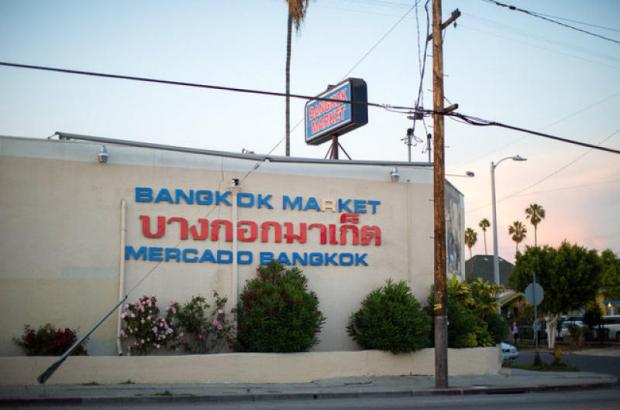
TASTES OF HOME: Bangkok Market, opened in 1972 by Pramorte Tila, was the first Thai food supermarket in Los Angeles. PHOTO: SUPPLIED

PACKING A PUNCH: 'Larb moo', a spicy salad made with minced pork, is popular in Isan and Laos — and increasingly on the other side of the world in the United States. PHOTO: 123RF

FAINT PRAISE: 'Nam prik' was called high-end poverty food by 'LA Weekly'. SUPPLIED
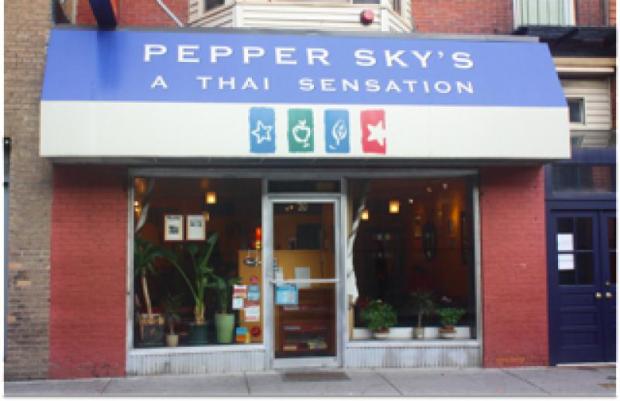
CHEAP BUT TASTY: Pepper Sky's in Cambridge, Massachusetts. PHOTOS: SUPPLIED
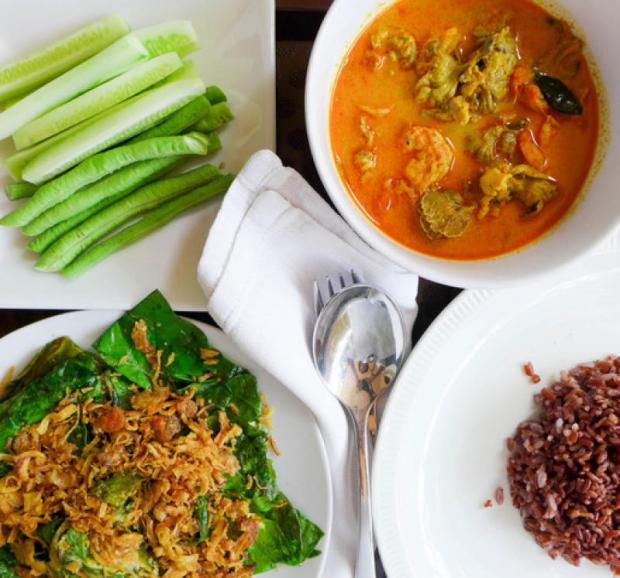
VARIED CUISINE: The new regional Thai food trend includes dishes from southern Thailand including Hat Yai and Phuket. SUPPLIED
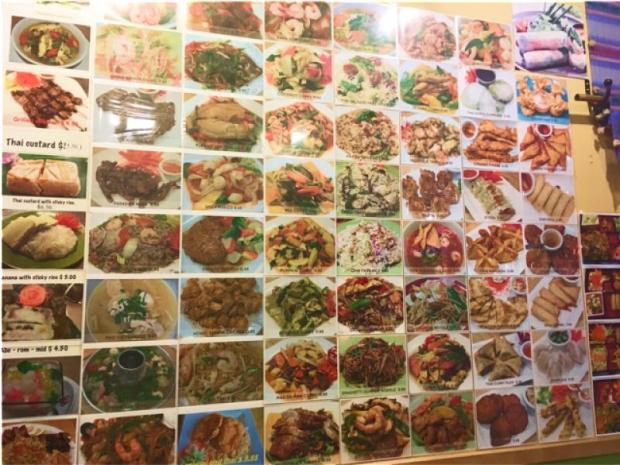
PLENTY TO CHOOSE: The extensive Thai-American menu at Thai North in Brighton, Massachusetts. SUPPLIED